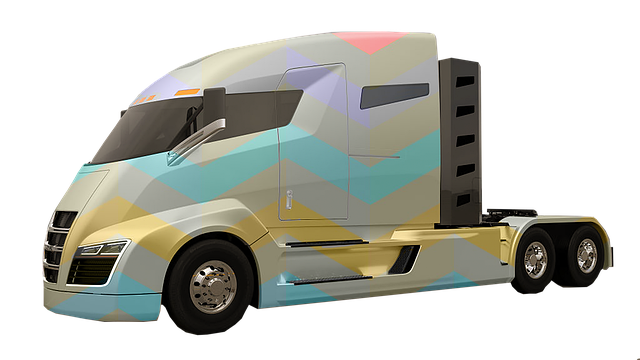Looking to register your car in California? This comprehensive guide will walk you through the process step-by-step. From understanding essential requirements to gathering all necessary documents, this article covers it all. Learn how to verify your vehicle’s VIN and complete inspections efficiently. We’ll also break down the payment process and provide tips for receiving your plates promptly. Ensure a smooth registration experience with our expert advice and insights from California’s DMV vin verifier.
- Understand California Car Registration Requirements
- Gather Necessary Documents for Car Registration
- Visit Your Local DMV to Register Your Vehicle
- Verify VIN and Complete Inspection Process
- Pay Registration Fees and Receive Your Plate
Understand California Car Registration Requirements

Before registering your car in California, it’s crucial to understand the state’s specific requirements. The California Department of Motor Vehicles (DMV) mandates that all vehicles operated on public roads must be properly registered and have a current registration certificate. One essential aspect is ensuring your vehicle has a valid Vehicle Identification Number (VIN) verification. This process involves checking the VIN accuracy through a trusted source like a DMV-approved vin verifier, which helps in preventing fraud and ensuring the car’s history is clear.
Additionally, to meet California’s standards, you’ll need to provide essential documentation, including proof of insurance, ownership proof, and possibly other identifying documents. For convenience, many individuals opt for mobile VIN inspection or mobile VIN verification services that come to your location, making the registration process more accessible. These services utilize advanced technology to swiftly validate your vehicle’s information, ensuring a smoother experience during car registration.
Gather Necessary Documents for Car Registration

Before you start the registration process, it’s crucial to gather all the essential documents. The California Department of Motor Vehicles (DMV) requires several key pieces of information for a successful car registration. One vital document is the Vehicle Identification Number (VIN) verifier, which can be obtained through a mobile VIN verification service or by visiting a local DMV office for a traditional VIN inspection. This unique number serves as a digital fingerprint for your vehicle and is essential for tracking ownership history and ensuring compliance with safety standards.
Additionally, you’ll need proof of insurance, a valid driver’s license, and registration fees. Make sure your insurance policy covers both liability and comprehensive or collision, depending on the type of car you own. Gather all these documents to streamline the registration process at the DMV or when utilizing a mobile VIN verifier for convenience and efficiency.
Visit Your Local DMV to Register Your Vehicle

To begin the registration process for your vehicle in California, start by visiting your local Department of Motor Vehicles (DMV) office. This is where you’ll officially register and title your car, ensuring it complies with state regulations. Once at the DMV, locate the appropriate counter or service window for vehicle registration. Bring all necessary documents, including proof of ownership, a valid driver’s license, and any required fees.
A crucial step in this process involves utilizing a Vehicle Identification Number (VIN) verifier. Many DMVs now offer mobile VIN verification services, allowing you to confirm your vehicle’s history and ensure it meets environmental and safety standards. This is a straightforward procedure that can be done quickly, enhancing the overall efficiency of registering your car.
Verify VIN and Complete Inspection Process

Before beginning the registration process, it’s crucial to verify your vehicle’s unique identifier—the Vehicle Identification Number (VIN). The DMV recommends using a reputable dmv vin verifier to ensure accuracy. This step is essential as the VIN plays a critical role in identifying your car and determining its compliance with safety standards. Accurate VIN information is required for completing both the title transfer and registration.
Once you have confirmed the VIN, you’ll need to go through the complete inspection process. This involves assessing your vehicle’s overall condition, including checks on lights, signals, brakes, tires, and other essential components. Some inspections can be conducted at designated stations or even through mobile vin verification services, streamlining the process for convenience and efficiency.
Pay Registration Fees and Receive Your Plate

After completing your vehicle’s inspection and gathering all necessary documents, it’s time to pay the registration fees. The California Department of Motor Vehicles (DMV) will process your application and issue a registration certificate, which includes your unique vehicle identification number (VIN). This process is crucial for official record-keeping and future reference.
Once your application is approved, you’ll receive your license plate and official registration documents in the mail or during a mobile vin verification/inspection appointment, depending on your preference. Ensure that all information on the documents is accurate to avoid any future issues while driving legally on California’s roads.
Registering a car in California is a straightforward process that requires understanding specific requirements and gathering essential documents. By visiting your local DMV, verifying your vehicle’s VIN, and completing necessary inspections, you can efficiently secure your car’s registration and receive its unique license plate. Remember to keep your documentation up-to-date with regular renewals, ensuring compliance with state regulations using a trusted DMV vin verifier.
